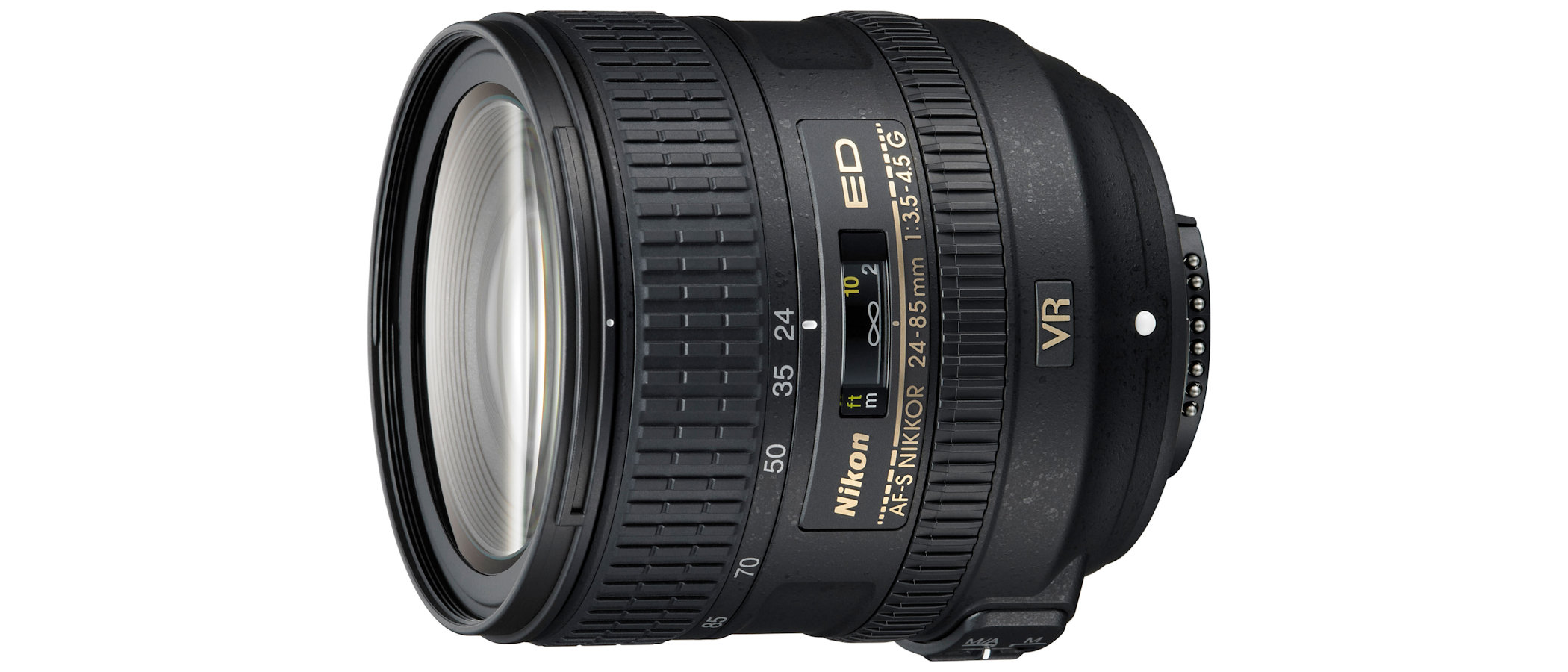Digital Camera World Verdict
Historically sold as a kit lens with cameras including the D610 and D750, this Nikkor is also an attractive buy on its own. It’s fairly compact and lightweight yet matches the widest viewing angle of 24-70mm zooms, while stretching further into telephoto territory. It has a variable rather than constant aperture rating but is none too slow at f/3.5-4.5. Old-school ring-type ultrasonic autofocus and mechanical aperture control make it compatible with older Nikon DSLRs.
Pros
- +
Useful zoom range
- +
Good overall performance
- +
4-stop Vibration Reduction
Cons
- -
Lackluster edge-sharpness
- -
Noticeable color fringing
- -
Barrel and pincushion distortions
Why you can trust Digital Camera World
The Nikon AF-S 24-85mm f/3.5-4.5G ED VR isn’t the most obvious choice as an own-brand standard zoom for FX (full-frame) DSLRs. Nikon’s 24-70mm f/2.8 and 24-120mm f/4 lenses hog the limelight but this one is a good compromise in terms of zoom range, as well as being much less expensive to buy at around a third to half the price of the other two.
Specifications
Mount: Nikon F
Full-frame: Yes
Autofocus: Yes
Stabilization: Yes
Lens construction: 16 elements in 11 groups
Angle of view: 84 to 28.5 degrees
Diaphragm blades: 7
Minimum aperture: f/22-29
Minimum focusing distance: 0.38m
Maximum magnification ratio: 0.22x
Filter size: 72mm
Dimensions: 78x82mm
Weight: 465g
Key features
High-performance ‘trinity’ 24-70mm f/2.8 zooms for Nikon DSLRs are available not only from Nikon itself but also from Sigma and Tamron. This 24-85mm naturally has a bigger zoom range and variable f/3.5-4.5 aperture rating, the latter enabling a relatively compact and lightweight build. Even so, the quality of construction feels solid and the lens features a metal mounting plate complete with a weather-seal gasket.
Autofocus is courtesy of a quick and whisper-quiet ring-type ultrasonic system. It comes complete with the usual full-time manual override and a focus distance scale mounted beneath a viewing window. There’s a M/A-M switch on the barrel, for quick and easy swapping between autofocus and manual focus modes, the former giving priority to manual override. There’s also an on/off switch for the 4-stop optical stabilizer, or ‘Vibration Reduction’, although there are no additional ‘Active’ or ‘Sport’ VR modes.
Optical highlights include an ED (Extra-low Dispersion) element and three aspherical elements, plus Super Integrated Coating. The 7-blade aperture diaphragm is controlled via Nikon’s traditional mechanical lever. Unlike many later lenses that feature electromagnetically controlled diaphragms, this makes the lens compatible with older Nikon DLSRs.
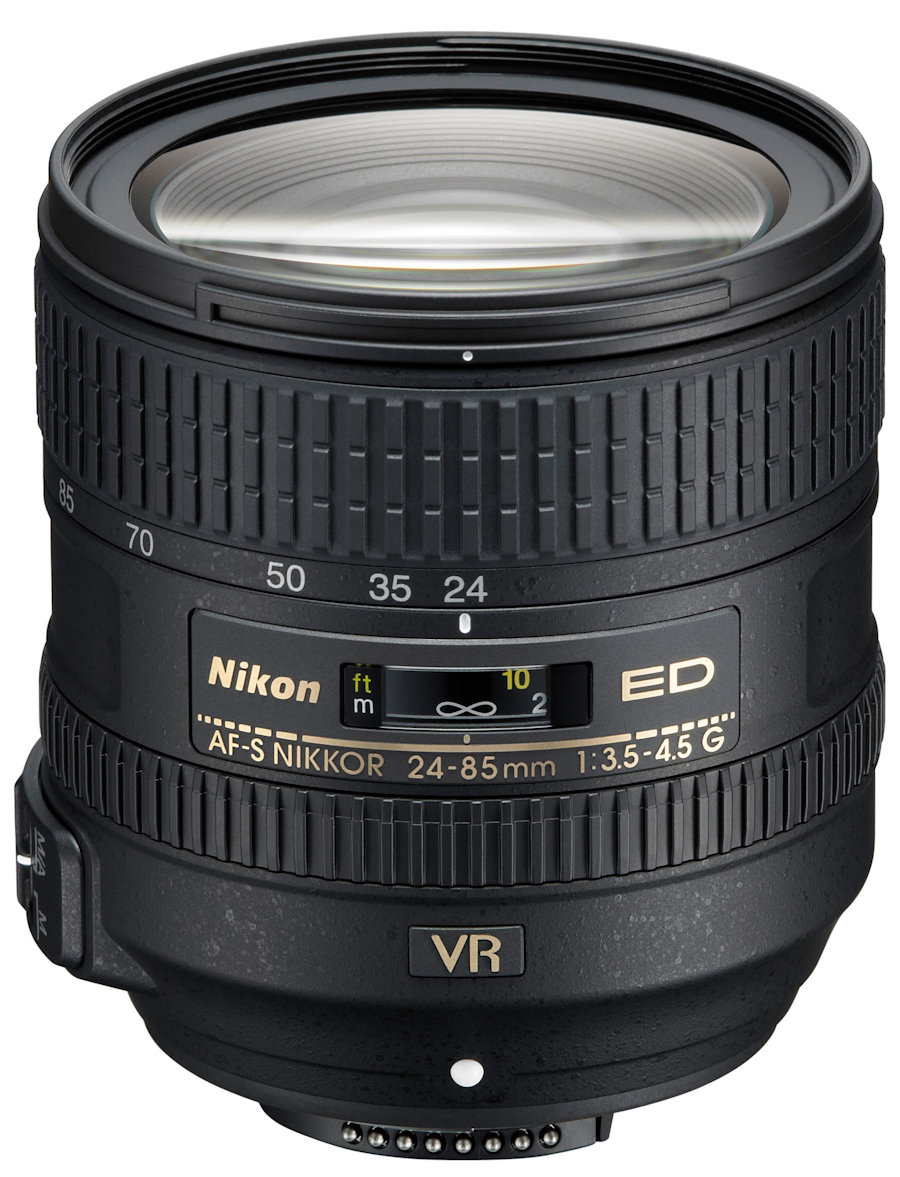
Performance
Performance is pretty good on the whole with nice contrast and mostly pleasing levels of sharpness, although distortions are quite severe. Color fringing can also be noticeable, especially when using the lens with early Nikon DSLRs that don’t feature automatic in-camera correction. The autofocus and VR systems work well and handling feels better than average for a ‘kit zoom’.
Lab results
We run a range of lab tests under controlled conditions, using the Imatest Master testing suite. Photos of test charts are taken across the range of apertures and zooms (where available), then analyzed for sharpness, distortion and chromatic aberrations.
We use Imatest SFR (spatial frequency response) charts and analysis software to plot lens resolution at the center of the image frame, corners and mid-point distances, across the range of aperture settings and, with zoom lenses, at four different focal lengths. The tests also measure distortion and color fringing (chromatic aberration).
Sharpness:
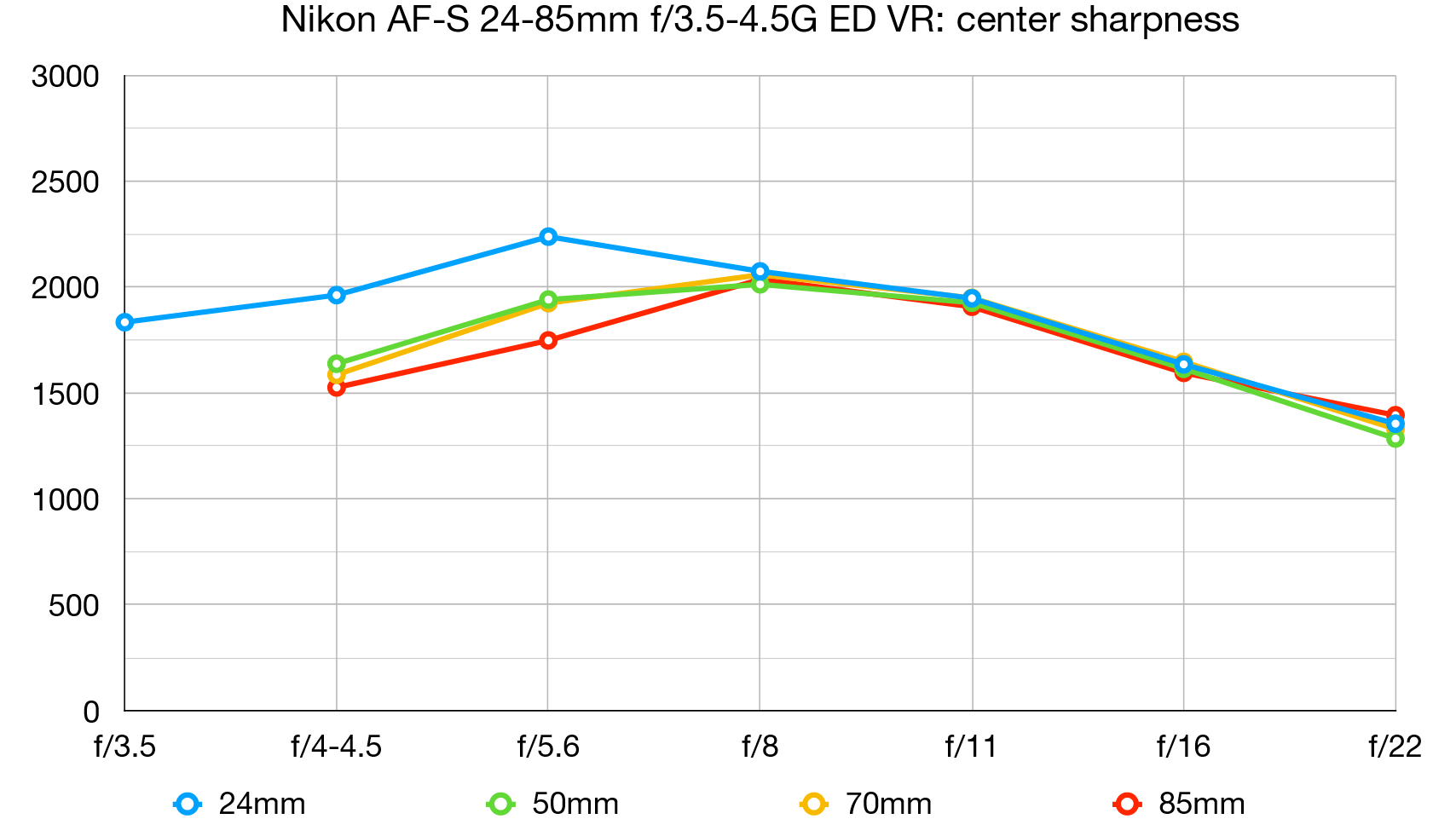
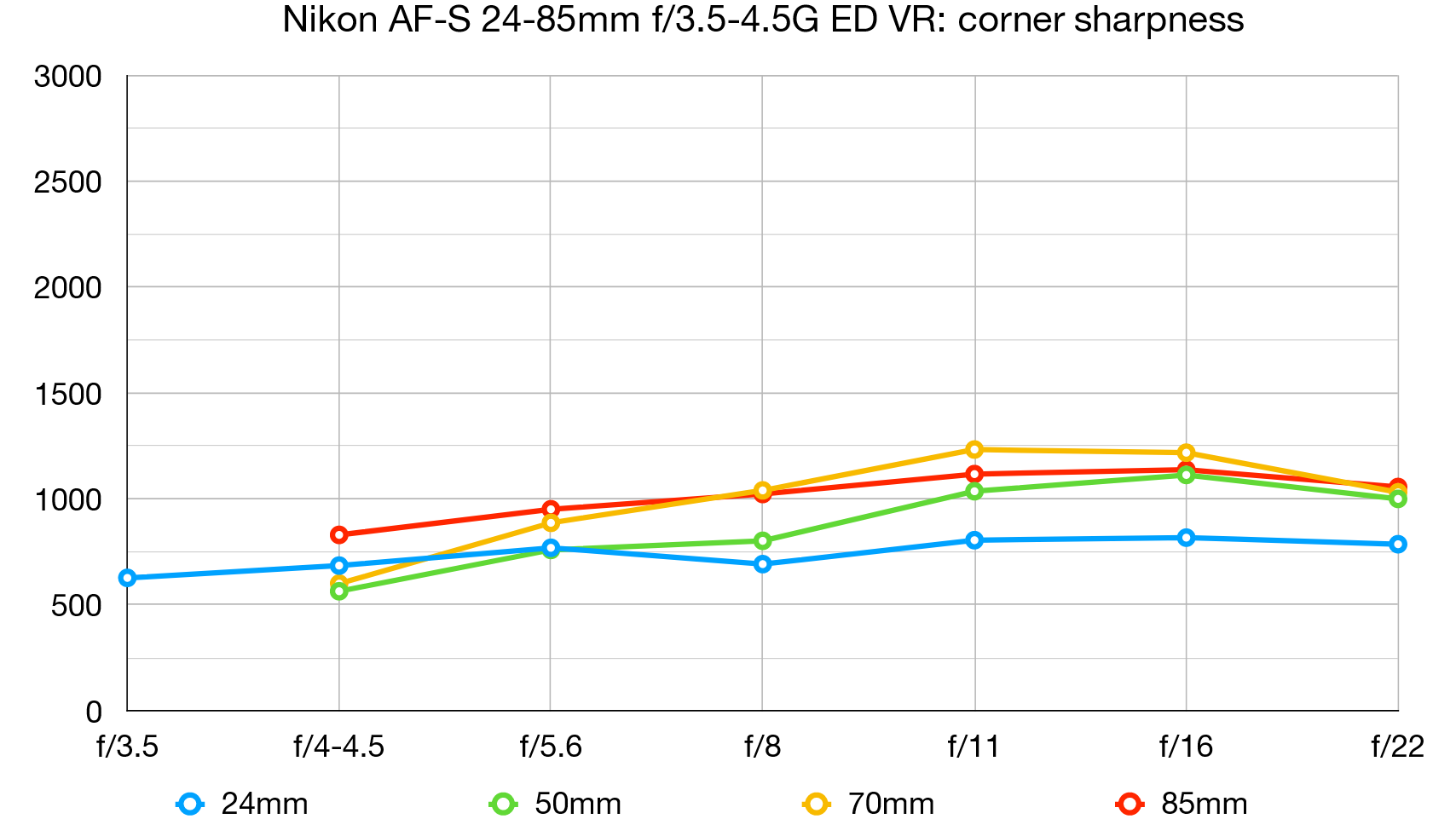
Center-sharpness is very good throughout the entire zoom range but it’s comparatively lackluster towards the edges and corners of the image frame.
Fringing:
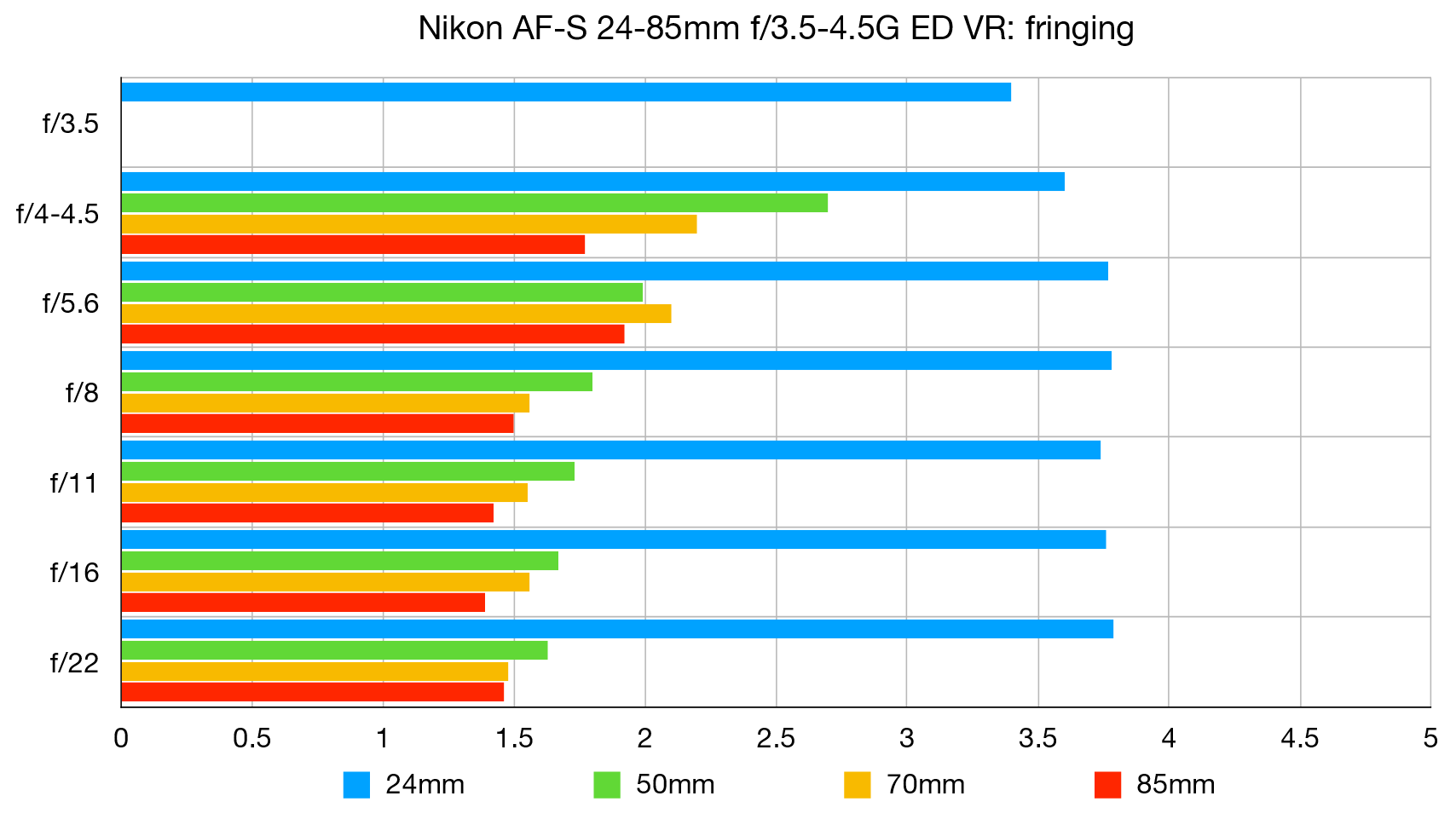
When uncorrected in early Nikon DSLRs, color fringing towards the edges and corners of the image frame is severe at 24mm and can still be quite noticeable at longer zoom settings.
Distortion:
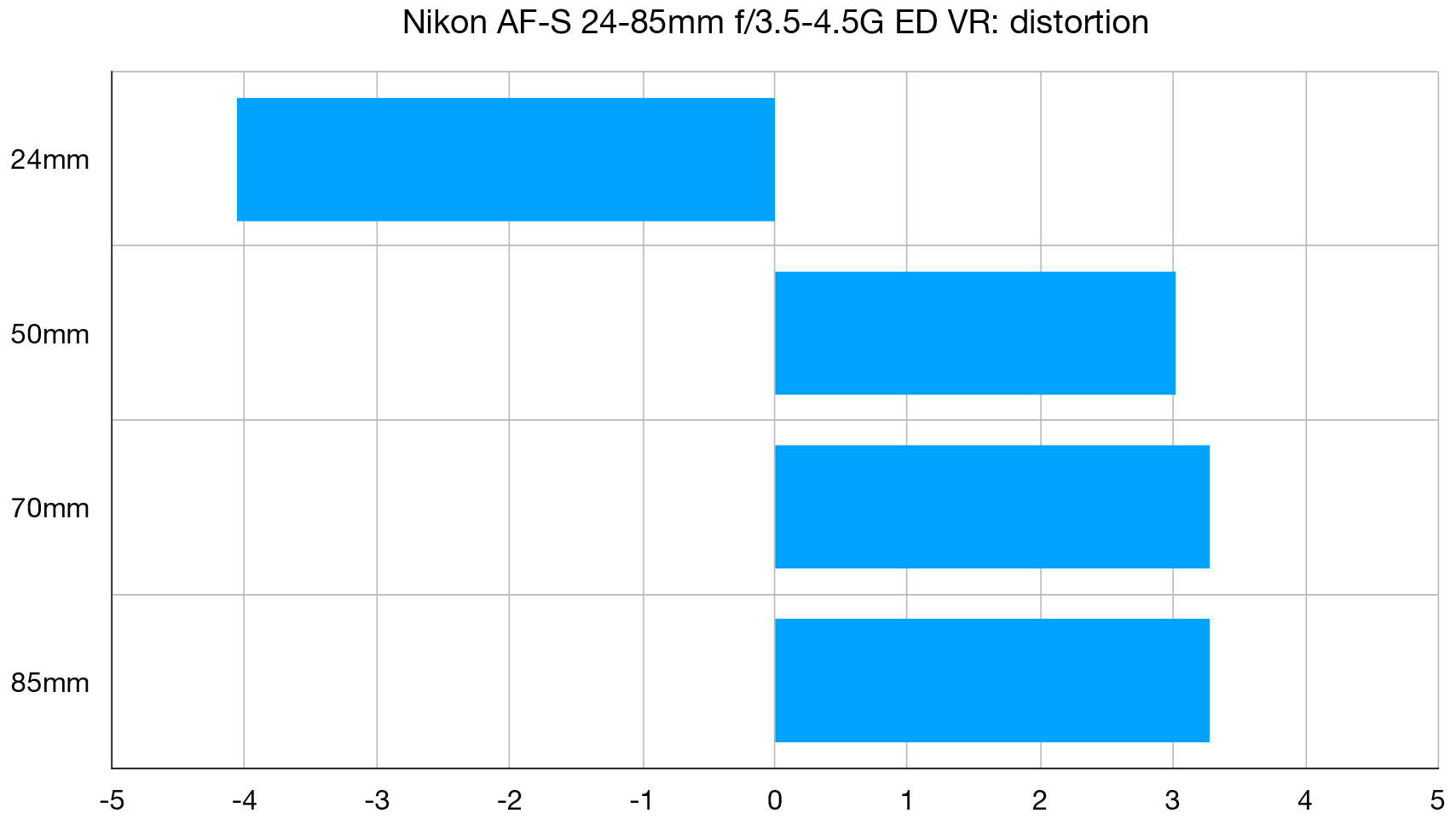
There’s heavy barrel distortion at the short end of the zoom range and noticeable pincushion in the 50-85mm sector.
Verdict
Historically sold as a kit lens with cameras including the D610 and D750, this Nikkor is also an attractive buy on its own. It’s fairly compact and lightweight yet matches the widest viewing angle of 24-70mm zooms, while stretching further into telephoto territory. It has a variable rather than constant aperture rating but is none too slow at f/3.5-4.5. Old-school ring-type ultrasonic autofocus and mechanical aperture control make it compatible with older Nikon DSLRs.
Read more:
• Best camera lenses to get
• Best Canon lenses
• Best Nikon lenses
• Best Sony lenses
Matthew Richards is a photographer and journalist who has spent years using and reviewing all manner of photo gear. He is Digital Camera World's principal lens reviewer – and has tested more primes and zooms than most people have had hot dinners!
His expertise with equipment doesn’t end there, though. He is also an encyclopedia when it comes to all manner of cameras, camera holsters and bags, flashguns, tripods and heads, printers, papers and inks, and just about anything imaging-related.
In an earlier life he was a broadcast engineer at the BBC, as well as a former editor of PC Guide.
